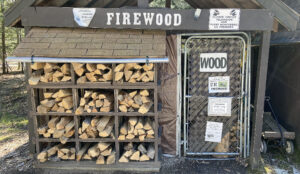
Wisconsin DNR invasive forest insects program coordinator Andrea Diss-Torrance demonstrates scraping a spongy moth egg mass off a tree while making a video on the subject for the DNR. / Photo Credit: Wisconsin DNR
By Art Kabelowsky, DNR Forestry Outreach/Communications Specialist
Arthur.Kabelowsky@wisconsin.gov or 608-335-0167
The fall and winter months present a perfect opportunity to protect trees by searching out and removing spongy moth egg masses.
The invasive insects currently exist only as tiny eggs, camped out in egg masses that can be found in places such as tree trunks and branches, under park picnic benches and swing sets, and under the awnings of buildings.
And now, the Wisconsin Department of Natural Resources (DNR) has debuted a short video showing exactly how to easily and safely remove egg masses to reduce next spring’s population of hungry spongy moth caterpillars.
Continue reading “DNR Debuts Video On Scraping Spongy Moth Egg Masses”

